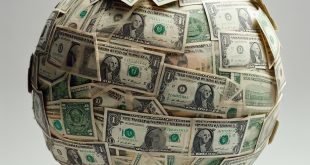Most Americans believe that the US central bank cannot fix the factors driving Inflation and recession has lately become a key word in most economic discussions.
Wages are not principally responsible for the inflation we’re seeing,” Federal Reserve Chairman Jerome Powell said on Wednesday. The tragic moment came also on Wednesday during Fed Chair Jerome Powell’s press conference. It was the sound of a man who has been given a mission impossible, but who feels based upon duty that he has got to go forward regardless.
Earlier this year, there was a line in earlier statements issued by the FOMC, but this month, the same line disappeared signaling that the Fed is now getting prepared for on a recession. That line was practically about FOMC’s desire to return to 2% inflation as an aim that is consistent with continued strong labour markets.
It still looks possible to bring down inflation without a recession. But, Powell added, “those pathways have become much more challenging due to factors that are not under our control… like the fallout from the war in Ukraine, which has brought a spike in prices of energy, food, fertilizer, and industrial chemicals, and also supply chains more broadly”, hinting that monetary policy alone cannot do this.
It is deemed as an acknowledgement from the Fed Chair that current inflation is mainly due to factors that have nothing to do with US credit conditions. In effect, markets are looking at a mission that needs to be fulfilled with a sewing machine, or maybe a fire extinguisher, when all Powell has in hand is a hammer.
The central bank relies mainly on a single instrument, the overnight interest rate between banks. This arrangement is based on a certain model of the economy. In this model, the supply side grows at a stable pace. Spending, meanwhile, may run ahead or fall behind, depending mainly on developments in the financial system.
The Fed’s power over the financial system may not be enough to stabilize the economy. Efforts to offset supply disruptions by adjusting the flow of credit somewhere else may fail to address the underlying problems, or even make them worse. The Fed seemed to think that current inflation was the kind of problem it was set up to solve.
Statements earlier this year described rising prices as a symptom of too much demand and of labour markets that were “tight to an unhealthy level.” Higher interest rates would moderate demand for labour, with slowing wage growth getting passed on to slower prices. As recently as May, the stated goal was to “get wages down.”
Powell has more or less admitted he was aiming the wrong way. In another striking moment from the press conference, he said, “Wages are not principally responsible for the inflation we’re seeing.” This judgment is consistent with what other economists have found. But it raises the question: If wages are not a key driver of inflation, why should the Fed address to cool down inflation with tools that act mainly on wages?
Today’s inflation is not about an overheated economy at all, it turns out. It is mainly due to global factors. Among the rich countries, the US stands out for the scale of its stimulus spending over the past two years. But its inflation performance is close to the middle of the pack. As Powell himself noted. Lots of countries are looking at inflation of 10%, and that is largely due to commodity prices.
Energy prices in particular, which seemed to have stabilized by the end of 2021, have marched upward since Russia’s invasion of Ukraine. This contributes, perhaps more than anything else, to the sense of panic around inflation. And yet as the chairman says, “Gasoline prices are not something we can do anything about”.
What the Fed can do is to discourage new housing construction (housing starts fell 14% in May), in the long run making housing more expensive, not less.
What the Fed can do is shift bargaining power in the labour market from workers to employers, causing wages to fall even further short of the cost of living. What the Fed can do, if it pushes hard enough, is to tip the economy into recession.
As the press conference made clear, Powell knows perfectly well that none of this will address the real sources of rising prices. But it is his job, and he intends to go on doing it.

 Noor Trends News, Technical Analysis, Educational Tools and Recommendations
Noor Trends News, Technical Analysis, Educational Tools and Recommendations




